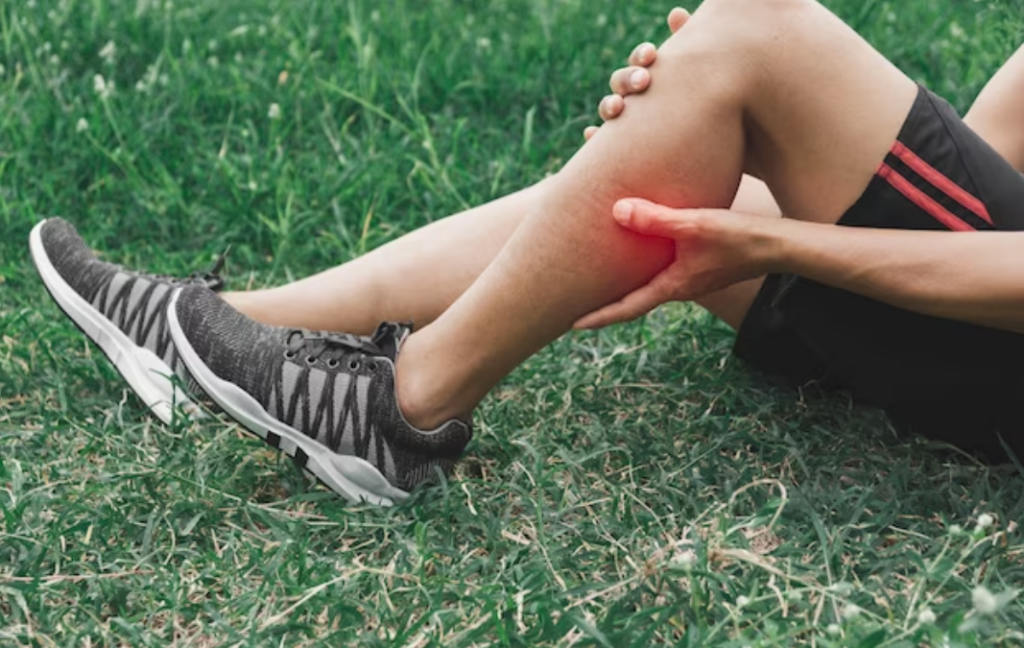If you've been struggling with back pain, it's essential to understand that relief is possible within just 30 days. You can start by integrating effective stretching exercises and core-strengthening routines into your daily life. Additionally, incorporating mindfulness techniques can greatly help reduce tension. However, the journey to a pain-free back doesn't end with these steps. There are deeper insights and strategies that can make all the difference in your recovery and long-term health. Curious about what these might be?
Understanding Back Pain Causes
When you think about back pain, it's essential to understand its causes to find effective relief. Back pain can stem from a variety of sources, and recognizing these can help you target your treatment more effectively. One common cause is muscle strain, often due to heavy lifting or sudden awkward movements. If you've been active or made a sudden change in your routine, this could be the culprit.
Another frequent cause is poor posture. If you spend hours sitting at a desk or slouched on the couch, your spine may not be aligned properly. This misalignment can lead to discomfort and pain over time.
Additionally, conditions like herniated discs or degenerative disc disease can also contribute to back pain. These issues arise when the cushioning between your vertebrae wears down or shifts, putting pressure on nearby nerves.
In some cases, medical conditions like arthritis or scoliosis might be to blame. These conditions can lead to chronic pain and require a different approach to manage effectively.
Stress and emotional factors can also play a role, as tension often manifests physically in the back.
Lastly, lifestyle choices like lack of exercise, obesity, and smoking can increase your risk of back pain.
Effective Stretching Exercises
Understanding the causes of back pain sets the stage for finding relief through effective stretching exercises. Incorporating these stretches into your daily routine can greatly improve flexibility, reduce tension, and alleviate discomfort in your back. Here are some stretches you can try.
Start with the cat-cow stretch. Get on your hands and knees. Inhale, arch your back, and look up (the cow position). Exhale, round your spine, and tuck your chin (the cat position). Repeat this for 10 cycles to promote mobility in your spine.
Next, try the child's pose. Kneel on the floor, sit back on your heels, and stretch your arms forward on the ground. Hold this position for 30 seconds, breathing deeply. This stretch gently elongates your lower back, providing relief.
The seated forward bend is another great option. Sit with your legs extended straight in front of you. Inhale, raise your arms overhead, and exhale as you reach forward toward your toes. Hold for 20-30 seconds, letting your body relax into the stretch.
Lastly, the knees-to-chest stretch can be highly effective. Lie on your back, pull your knees toward your chest, and hug them for 20-30 seconds. This stretch helps to relieve tension in your lower back.
Incorporate these stretches into your daily routine, and you'll likely notice a great improvement in your back pain over time.
Remember to listen to your body and avoid pushing yourself too hard.
Strengthening Your Core
Strengthening your core is essential for alleviating back pain and improving overall stability. A strong core supports your spine, reducing strain on your back and enhancing your posture. When your core muscles are strong, they take on more load, allowing your back to relax and recover.
Start by incorporating simple exercises into your routine. Planks are a fantastic way to engage your entire core without putting too much pressure on your back. Aim for three sets of 20 to 30 seconds, gradually increasing the duration as you get stronger. Side planks target your oblique muscles and improve lateral stability, so don't skip those.
Bridges are another great exercise. Lie on your back with your knees bent and feet flat on the floor. Lift your hips towards the ceiling while squeezing your glutes, and hold for a few seconds before lowering back down. Try three sets of 10 to 15 repetitions.
Additionally, consider incorporating pelvic tilts into your routine. They help strengthen your lower abdominal muscles and ease tension in your back. Simply lie on your back, bend your knees, and gently tilt your pelvis upward while flattening your lower back against the floor. Hold for a few seconds, then release.
As you progress, you can add resistance or try variations like stability ball exercises. Remember to listen to your body and consult a healthcare professional if you experience pain.
Strengthening your core won't only help alleviate back pain but also enhance overall physical performance.
Incorporating Mindfulness Techniques
Incorporating mindfulness techniques into your routine can markedly enhance your ability to manage and alleviate back pain. Mindfulness encourages you to focus on the present moment, which can help you become more aware of your body and its sensations. By being present, you can better identify the triggers of your pain and respond with appropriate strategies.
Start by setting aside a few minutes each day for mindfulness practice. Find a quiet space, sit comfortably, and close your eyes. Take deep, slow breaths, allowing your abdomen to rise and fall. As thoughts drift in, acknowledge them without judgment, and gently return your focus to your breath. This simple exercise not only calms your mind but also reduces stress, which can contribute to tension in your muscles and exacerbate pain.
You can also incorporate mindfulness during daily activities. Whether you're walking, eating, or stretching, pay full attention to the experience. Notice how your back feels in each position and how your movements affect your pain levels. This heightened awareness can help you avoid movements that worsen your discomfort.
Another effective technique is guided imagery. Picture a peaceful scene in your mind, focusing on the details—the colors, sounds, and sensations. This can help distract you from pain and promote relaxation.
Seeking Professional Help
While mindfulness techniques can greatly assist in managing back pain, there are times when professional help may be necessary to address underlying issues. If your pain persists despite your best efforts at home, it's wise to seek advice from a healthcare professional. They can provide a thorough assessment to determine the root cause of your discomfort, which is vital for effective treatment.
You might consider visiting a physical therapist, chiropractor, or even a pain management specialist. These professionals can create a personalized treatment plan tailored to your specific needs. They often use a combination of manual therapy, exercises, and modalities like ultrasound or electrical stimulation to alleviate pain and improve mobility.
Additionally, if you're experiencing symptoms like numbness, tingling, or weakness in your legs, it's important to consult a doctor promptly. These could be signs of a more serious condition that requires immediate attention.
Don't hesitate to discuss any lifestyle factors that could be contributing to your pain. Your professional can guide you on proper body mechanics, posture, and ergonomics to prevent further issues.
Lastly, remember that seeking help is a sign of strength. You're taking a proactive approach to your health, and that's commendable. By working closely with healthcare professionals, you can address the underlying causes of your back pain, leading to more effective relief and a better quality of life.
Conclusion
In just 30 days, you can take significant steps toward relieving your back pain. By understanding the causes, incorporating effective stretching and core-strengthening exercises, and practicing mindfulness, you'll create a strong foundation for recovery. Don't hesitate to seek professional help if your symptoms persist; personalized treatment can make a world of difference. Stay committed to your routine, and you'll likely feel more flexible, stronger, and less stressed. Your journey to a pain-free back starts now!



